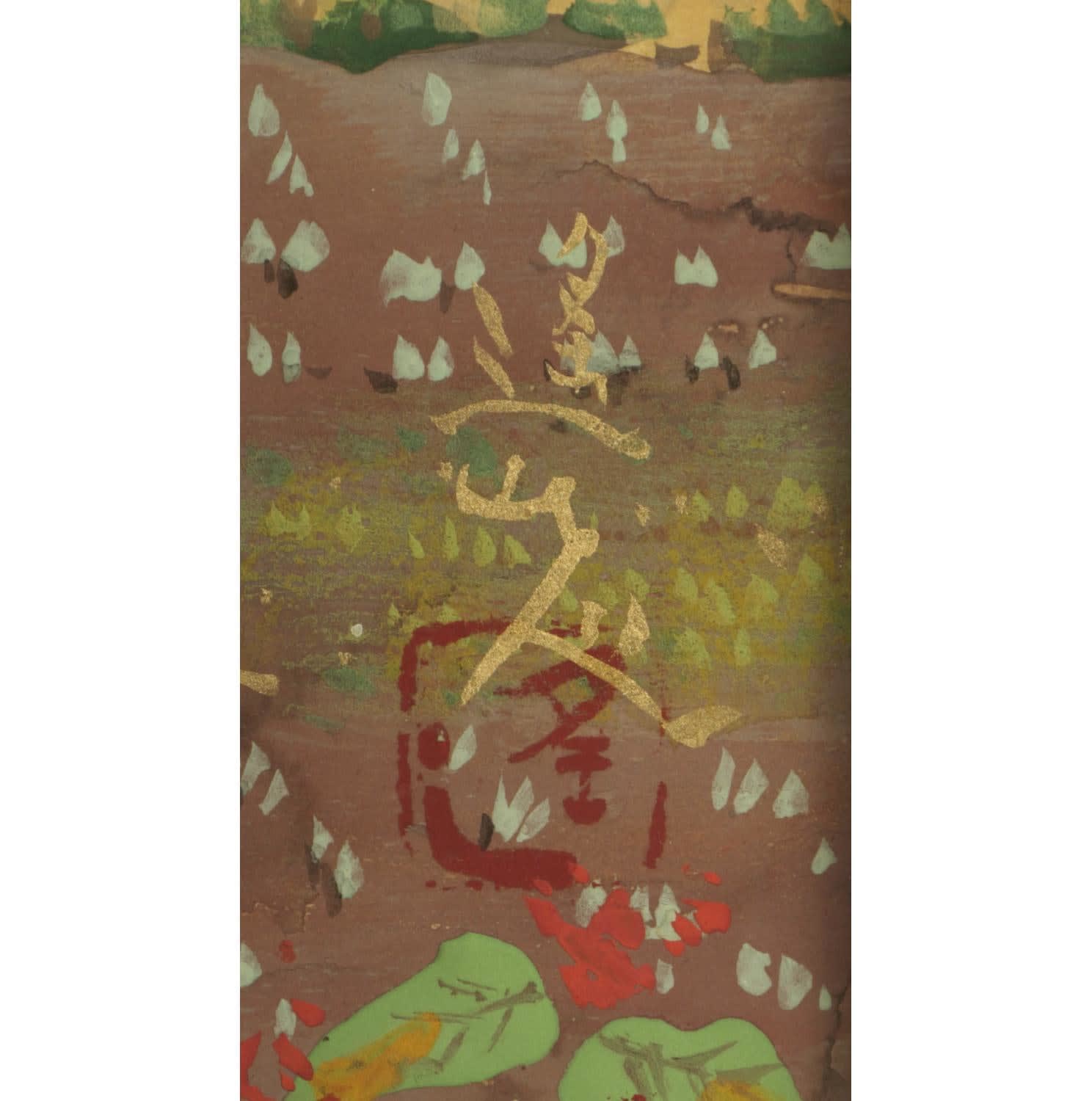Ikeda Yōson (1895–1988)
After the Autumn Harvest
Color and gold on paper, framed (10P)
Ikeda Michio registration
With a label signed by the artist
Seal: Yo
41 x 53 cm
68 x 80 cm (overall)
Further images
Backgounded by the blue sky, two white herons are delightedly soaring into the air; among the trellises scattered throughout the paddy fields, a fox halts, with his bulging eyes roving around, as if he is hunting or perhaps alarmed. The treatment of the eyes and the facial expression conveying a somehow waggish feeling shows a distinctive style of Ikeda Yoson. The works of Yoson’s later period, such as the Santoka series, inspired by the haiku poems of Taneda Santoka, stand out for its harmonious interplay of two or three elements to create a unique world; yet in this work, instead of focusing on the three of main elements: one fox, the trellises of dried rice stalks and two herons, it is more of value to realize Yoson depicts the autumnal rustic scenery of his suburb with the gentle seasonal breeze. Over the mountains, Yoson painted the sky in the light shades of orange, capturing the twilight dusk as well as imparting a sense of autumnal loneliness.
Ikeda Yoson (nihonga painter; 1895–1988)
Okayama-born nihonga painter. His real name is Shoichi. Graduated from the Kyoto City School of Arts. Learned yoga at Matsubara Sangoro’s private school, Tensai-gajuku. Later became a disciple of Chikujo-kai founded by Takeuchi Seiho. Established a style of vivid colored landscapes using bird’s eye view under the influence of Tomita Keisen. Co-founded Suimei-kai and Sosei-sha with Uemura Shoko and Hamada Kan respectively. Founded his private school, Seito-sha, devoting to the cultivation of young painters. Also appointed a jury in Shin-bunten and Nitten. Consultant to Nitten. Member of the Japan Art Academy. Designated as a Person of Cultural Merit, and received the Order of Culture.
Ikeda Yoson (nihonga painter; 1895–1988)
Okayama-born nihonga painter. His real name is Shoichi. Graduated from the Kyoto City School of Arts. Learned yoga at Matsubara Sangoro’s private school, Tensai-gajuku. Later became a disciple of Chikujo-kai founded by Takeuchi Seiho. Established a style of vivid colored landscapes using bird’s eye view under the influence of Tomita Keisen. Co-founded Suimei-kai and Sosei-sha with Uemura Shoko and Hamada Kan respectively. Founded his private school, Seito-sha, devoting to the cultivation of young painters. Also appointed a jury in Shin-bunten and Nitten. Consultant to Nitten. Member of the Japan Art Academy. Designated as a Person of Cultural Merit, and received the Order of Culture.







